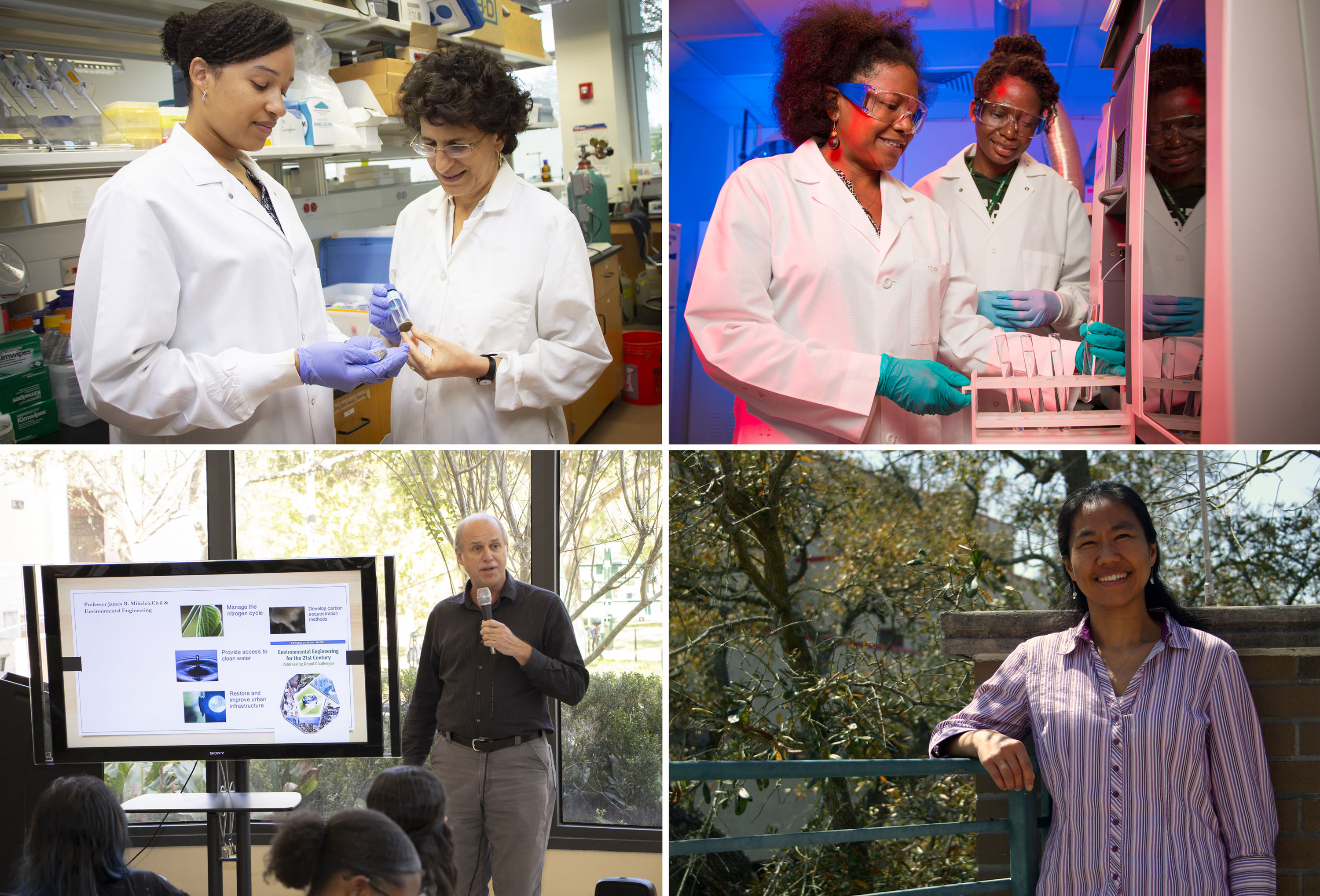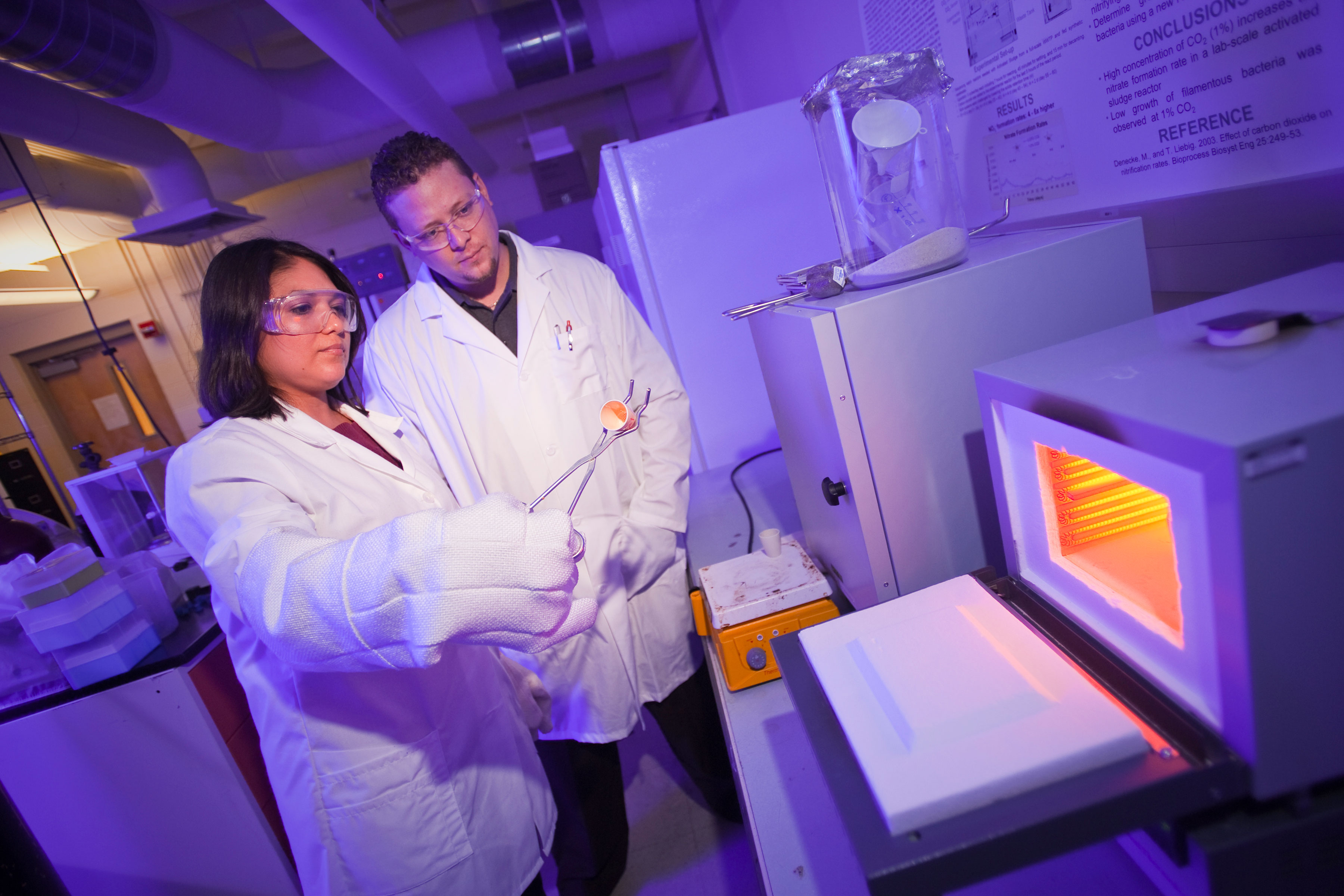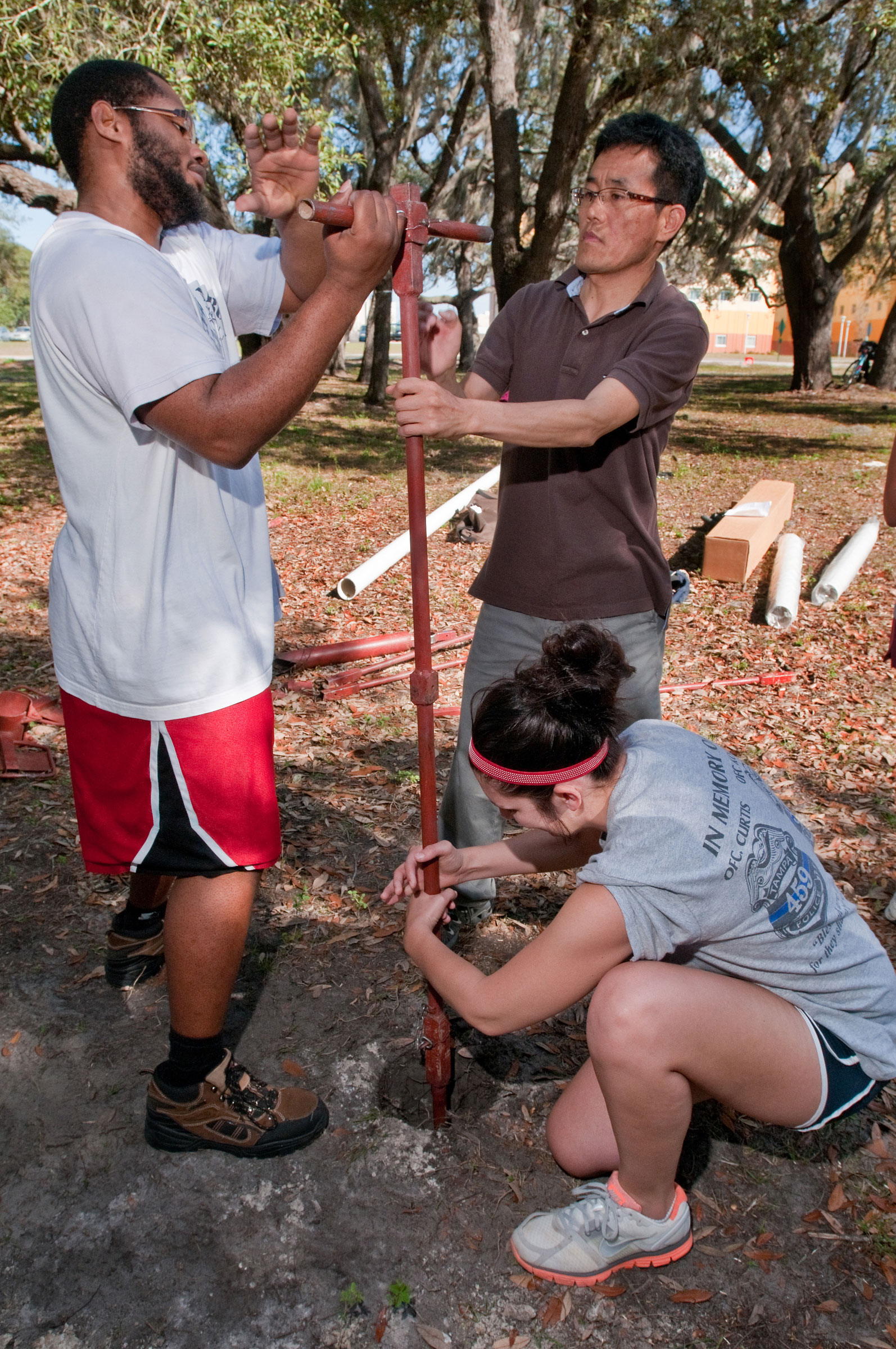College of Engineering News Room
Interdisciplinary USF team launching $1 million S-STEM Scholarship project to support graduate students underrepresented in STEM

by Russell Nay
USF’s Tampa campus is currently home to around 45,000 students who represent 41 states in the U.S. and 64 countries around the world. It’s a melting pot of students with various backgrounds and experiences, and research on better supporting students at USF may benefit students in universities throughout the country.
This fall, the National Science Foundation awarded a team of USF faculty $1 million to provide 92 scholarships — called S-STEM scholarships — to at least 52 master’s students as part of a five-year program designed to improve the retention and academic experiences of STEM master’s students in the U.S. The team is led by David Lewis, Ph.D., of the Department of Integrative Biology and will provide scholarships to students of geosciences, environmental engineering, water resources engineering and integrative biology. Students’ individual scholarships will last 1 ½ to two years.
Every student awarded an S-STEM scholarship becomes part of an interdisciplinary community of researchers working at a local level to help manage the nitrogen cycle — one of the National Academy of Engineering’s 14 “Grand Challenges” that the organization deems crucial to humanity’s development. Managing nitrogen pollution, often from agricultural and residential lawn fertilizers that end up in waterways, is one of the nation’s most costly environmental pollution problems.
Virginia Tech School of Education professor Tonisha Lane, Ph.D., leads the project’s educational research component and will help faculty better understand the effect of the program on student success. Lane said it’s important that more diverse voices are included in the decision-making processes of developing solutions for the NAE Grand Challenges.
“We need to see more diversity of racially, ethnically, economically-diverse and first-generation (in college) individuals in and outside of the classroom and also in the workforce,” she said. “We need to actually embrace and advance their ideas … to ensure these individuals are included in these solutions.”

Beginning in grade school, many students historically underrepresented in STEM aren’t given equitable opportunities to academic and professional paths in STEM fields. Most research on STEM student retention and persistence through college also focuses on undergraduate and doctoral degrees, Lane said. This gap in information on master's student retention makes the project a great way to build important data for supporting grad students who may find themselves facing barriers to their education that many educational researchers and administrators aren’t even aware of.
“There’s a lot of assumptions about graduate students that if you’ve made it this far, you should already know how to think critically about the education you’re pursuing … to get the most out of your experiences both academically and professionally,” Lane said.
Project co-principal investigator and USF Civil and Environmental Engineering professor Sarina Ergas, Ph.D., said that her lab is looking at nitrogen management from a variety of different perspectives ranging from reinventing septic systems that remove nitrogen pollution to working with aquaculture, and she said there are a lot of USF faculty involved in the issue in general.
“Almost all environmental engineering faculty are doing some work related to managing nitrogen,” Ergas said. “We have a huge problem in Florida of overgrowth of algae, eutrophication and hazardous algal blooms. …It’s a great theme for our program as well as integrative biology and geosciences.”
Students in the program will work with a USF research advisor whose work reflects students’ specific interests in nitrogen management and who will then become their major or co-major professor. Most students, Ergas said, will complete their master’s thesis around their research in the program and under this selected professor.
The project will bring participating master’s students and faculty together as a community through courses focused on field-related issues affecting Tampa Bay communities, as well as a number of extracurricular scholar activities including roundtable STEM career discussions, professional development training, peer and faculty mentoring sessions, Q&A panels with alumni, academic workshop and conference access and social events for program members.
Much of the program is focused on helping students explore STEM career options, preparing them for academic and professional opportunities in their fields, helping students become better researchers and better connecting the work students do in the classroom and lab to real-world issues existing locally and nationally.
“By being part of this broader cohort of students who are looking at nitrogen management from all these different angles and approaches, they get a much broader idea of the problem and where they can make their own contributions,” Ergas said.

USF Civil and Environmental Engineering professor James Mihelcic, Ph.D., said that the program is designed to help graduate students see the bigger picture of their education and research and provide them with a close-knit cohort of other student researchers and mentors of all degree levels who will support them through their journeys to achieving their degrees.
“If you look at why students quit grad school, one is having a feeling of isolation,” Mihelcic said. “If you’re just taking classes, you might know some people in a study group, but you might still feel isolated. …The idea of the S-STEM program is to build the cohort and recruit and retain students.”
Nitrogen cycle management, Mihelcic said, is perfect for an interdisciplinary project because it requires different perspectives and fields of expertise. Working with researchers in different fields is a more real-world approach and an important part of helping students become better communicators with the public and developing strong science literacy.
“People call nitrogen management a ‘wicked complex problem,’” he said. “It’s not easy to address from just my expertise or your expertise, which leads to this idea of having interdisciplinary outlooks. … The professional network is not just a research or educational network. It’s also a network of practitioners.”
Throughout the S-STEM project’s five-year timespan, Mihelcic said that lead faculty will be evaluating feedback from a third-party evaluator on graduation and course performance, as well as student interviews on how the program is helping them achieve their academic goals. The variety of evaluation data will help faculty determine which parts of the program are most effective for student retention and success while allowing students to help shape the program’s core focus through their experiences.
At the end of the project, involved researchers will likely disseminate their findings to colleagues in their respective departments at USF, as well as in universities and STEM programs across the country.
“USF represents the diversity of this nation,” Lane said. “There are best practices in the field concerning what it takes to educate and graduate individuals of color, and we need to draw upon those best practices and apply them in all institutions.”